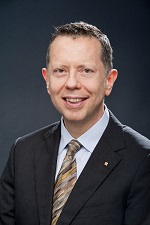Lectures/ Talks/ Seminars
Lecture on "Generative Artificial Intelligence in Healthcare"
|
|
Lecture on "Why Deep Learning for Time Series Signal Processing?"
|

Bio:
Vrijendra Singh is working as Professor at the Dept. of Information Technology,
Indian Institute of Information Technology Allahabad, Prayagraj, India.
He received his Ph.D. degree in the area of Machine Learning & Signal Processing from
Dayalbagh Educational Institute, Agra, India in the year 2008. He has over 19+ years of
experience in academics (teaching/training), research & development and consulting. He
has also worked at Dept. of Electrical Engineering, IIT Kanpur as Senior Project Associate,
Ecole Polytechnique Federale de lausanne (EPFL), Switzerland as Visiting Research Faculty
and was consultant to Putera Sampoerna Foundation, Jakarta (2012) for Course curriculum
development in IT and allied areas. He has been conferred with the “50 Fabulous Edutech
Leaders Award'' at the 8th World Education Congress, Mumbai, India in the year 2019.
He has developed various intelligent systems/softwares for Indian Industries/ Research
Organisations like TVS Motors Company, BARC, ISRO, SAIL, IOCL, NPTEL etc. He has transferred
technology to TVS Motors Co. Hosur, India for testing of two wheelers engine during assembly
line based on acoustics data analytics in the year 2009. He has successfully deployed a system
(under Government of India & National Science Foundation (NSF) USA sponsored joint Project,
2013-2015) for Classification/Protection of Wildlife & Humans, Virtual Fencing, Gunshot Detection &
Localisation using IOT devices & Sensor Communication Networks at Panna Tiger Reserve,
Madhya Pradesh, India in collaboration with Indian Institute of Science Bangalore,
Wildlife Institute of India Dehradun, the Ohio State University, Cornell University and the
University of California, Los Angeles. He has authored over seventy five publications in reputed
international journals, conference proceedings/book chapters and edited one book. Currently, he
is serving as the Chairman, IEEE Computational Intelligence Society, UP Section, India, Advisor
to Network Power Solution Enterprise, New Delhi, India, collaborator to NavAjna Technologies Pvt.
Ltd, Hyderabad, India and Consultant to Pragmalytics Technologies, Kochi, India.
Abstract of the talk:
From the recent years the Internet of Things is an increasingly becoming integral part of our daily lives. Most of the time, the time series data/signals are generated from these IoT devices. The real time analysis of these signals are very important for ease of doing things and making our lives easier. In this talk, we will first understand what a time series signal is? What are the main sources in the world from which the time series signals are generated? A lot of motivational real examples and AI products and solutions will be explained in order to understand the importance and real use of the time series data analysis. Machine Learning concepts from very basic building blocks to advanced architectures including the Deep Neural Networks will be explained. The classical signal processing methods to analyze the time series data analysis along with its machine learning/deep learning counterpart algorithms will be explained along with the comparison of different state of the art approaches. The research problems of the domain along with the challenges shall also be addressed during the session.
Lecture on "Deep Learning and Artificial Intelligence"
|
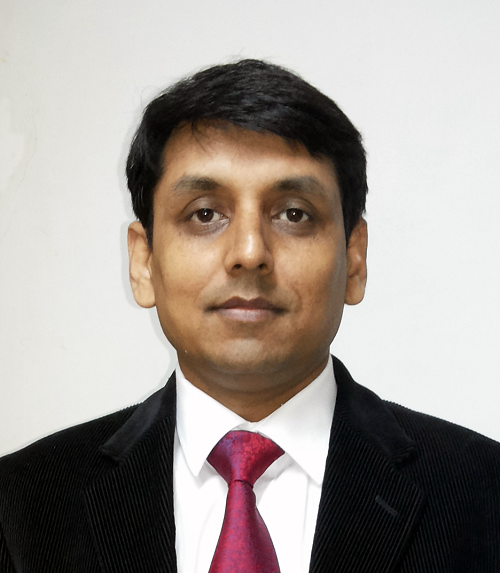
Bio:
Dr. Nishchal K Verma (SM'13) is a Professor in the Department of Electrical Engineering at Indian Institute of Technology Kanpur, India. He obtained his PhD in Electrical Engineering from Indian Institute of Technology Delhi, India. He is an awardee of Devendra Shukla Young Faculty Research Fellowship by Indian Institute of Technology Kanpur, India for year 2013-16. Dr. Verma's research expertise falls under Artificial Intelligence (AI) related theories and its practical applications to many inter-disciplinary domains but not limited to machine learning, deep learning, computer vision, prognosis and health management, bioinformatics, cyber physical systems, complex and highly non-linear systems modelling, clustering, and classifications, etc. He has published more than 240 research papers and 4 Books (edited/ co-authored) in the field of AI. He has successfully completed 23 projects from various funding agencies such as The BOEING Company, USA, DST, DRDO, JCBCAT, MHRD, SERB, CSIR, IIT Kanpur, MCIT, SFTIG, VTOL, etc. He has 15+ years of experience in the field of AI. He has been serving as Associate Editor/ Editorial Board Member of various reputed journals and conferences which include IEEE Transactions on Artificial Intelligence, IEEE Transactions on Neural Networks and Learning Systems, IEEE Computational Intelligence Magazine, and many more. He has also developed several AI related key technologies for The BOEING Company, USA and organized AI related workshops, conferences, seminars, short term courses, etc.
Abstract of the talk:
We are living in an era where Artificial Intelligence (AI) has started to scratch the surface of its true potential. Not only does AI create the possibility of disrupting industries and transforming the workplace, but it can also address some of society’s biggest challenges. Autonomous vehicles may save tens of thousands of lives and increase mobility for the elderly and the disabled. Precision medicine may unlock tailored individual treatment that extends life. Smart buildings may help reduce carbon emissions and save energy. These are just a few of the potential benefits that AI promises, and is starting to deliver upon. Even with advances and success of deep learning algorithms in various applications like speech recognition, image classification, handwriting recognition, fraud detection, etc., the deep learning model has still some limitations. Due to advancements in fuzzy logic and systems in the past decades, handling such complex data has become easy. In effect, the addition of fuzziness into the model of a neuron makes it better to adapt the behavior of underlying systems that are imprecisely defined through their high degree of complexity. The linguistic and numeric form of data can be handled together by a Deep Fuzzy Network (DFN). DFN is developed using both Mamdani or Takagi-Sugeno FIS where nodes of hidden layers act as Mamdani or Takagi-Sugeno FIS. DFN has high robustness towards uncertainties due to vagueness, imprecision, and ambiguity. There is a wide scope to develop very effective machine learning architectures based on DFNs with high abstraction quality, high robustness towards uncertainty due to vagueness, ambiguity, and imprecision as well as uncertainty due to randomness and intuitively intelligible to human beings in terms of design and working.
Lecture on "UNDERSTANDING OF GENETIC ALGORITHM"
|
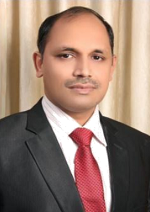
Bio:
Prof. Brajesh Varshney completed his B. Sc. (Engineering) Mechanical in 1997 and M.Tech. (Engineering Systems: Mechanical) in 2002 from Faculty of Engineering, Dayalbagh Educational Institute (Deemed University), Dayalbagh, Agra. He obtained first division throughout class 10th to M.Tech. Prof. Varshney has also completed Ph.D. in 2013 from ABV-Indian Institute of Information Technology & Management (Deemed University, Government of India), Gwalior. Currently, Prof. Brajesh Varshney is the Director of Kanpur Institute of Technology, Kanpur, India.
Abstract of the talk:
Optimization is the process of making something better.
Traditional Optimization Algorithms include: Single Variable
Optimization Algorithms, Multivariable Optimization Algorithms,
Constrained Optimization Algorithms and Specialized Algorithms
(Integer Programming, Geometric Programming. Non Traditional
Optimization Algorithms include: Genetic Algorithms, Simulated
Annealing, Neural Network Based Optimization and Optimization
of Fuzzy Systems. Genetic Algorithm (GA) technique is considered
very powerful in recent decades to solve optimization problems.
GA mimics the concepts of natural genetics and natural selection
to constitute search and optimization procedures. GAs are computerized
search and optimizations algorithms based on the mechanics of Natural
Selection and Natural Genetics. Prof. John Holland and Ann Arbor
gave the concept of these Algorithms (Holland, 1975). Prof. Goldberg,
Prof. Deb, etc. are pioneer in this field. The most important
characteristic of GA: Robustness. Solutions of GAs are very close to
the natural formulation. First stage of GA is the generation of
population and evaluation of the chromosome (fitness function).
There is lot of fitness function available in the literature. In
second stage, GA operations are carried out. For this there are three
GA operators: Reproduction, Crossover and Mutation.
Reproduction: Good chromosomes from the population are selected and
a mating pool is formed. Above average chromosomes are picked from
the current population and their multiple copies are inserted in
the mating pool. The commonly used reproduction operator is the
proportionate reproduction operator where the chromosome is selected
for the mating pool with a probability proportional to its fitness.
A roulette-wheel strategy is used.
Crossover: New strings are created by exchanging the information among
the strings of mating pool. In most cross over operators, two strings
are picked from the mating pool at random and some portions of the
strings are exchanged between the strings. There is number of cross over
operators in GA literature.
Mutation: A crossover operator is mainly responsible for the search of
new chromosomes, even though a mutation operator is also used for this
purpose. The need for mutation is to create a point in the neighborhood
of the current point thereby achieving a local search around the current
solution. The mutation is also used to maintain diversity in the population.
The random substitution method for mutation operation is used. That is
chromosome chosen to mutate is replaced randomly by a new chromosome with
certain mutation probability.
These operators will create new population. New population is further
evaluated till termination criteria is met (i.e. fitness value is keep
on increasing).
Lecture on "An Awareness of CIS and role of Computational Intelligence in Sciences"
|

Bio:
Dr. Aparna Dixit is an Associate Professor in the Department of Physics in Basic Sciences and Humanities at Pranveer Singh Institute of Technology Kanpur, India. She obtained her PhD in High Energy Physics from Chatrapati Sahu Ji Maharaj University, Kanpur India. She is awarded as Best Student of the year and Securing Highest marks in all M.Sc exams in Christ Church Degree College, Kanpur during 1998-99. She has a good understanding in High Energy Physics. She works on model building theories like extensions of Standard Model with the appearance of exotic particles and their applications in collider physics. Recently, she started working in material Science such as perovskite based oxide materials used in semiconductors, half-heusler compound and full heusler compounds. She is extensively studied the properties of these materials such as electronic structures, band theories, thermodynamic properties, thermoelectric properties, elastic properties etc. She has published more than 20 research papers and 6 book chapters in various national and international journals. She has been awarded as Outstanding Branch Counselor award in 2020 in IEEE UP Section. She has been nominated as Senior member IEEE. She has 15+ years of experience in the field of research and education. She has started a technical club which is affiliated under VIPNET DST named ARYABHATTA.
Abstract of the talk:
As we have observed that Artificial Intelligence has shown remarkable features in the field of Sciences including different branches of physics. It helps in solving the greatest problem that are otherwise difficult, time consuming or even impossible for human beings. AI is used in different problems of high energy physics. We have seen a biggest discovery in physics like Higgs boson particle or God particle. This was discovered by researchers at Large Hadron Collider by using Neural Network. All the researches at LHC have to deal with millions of data each and every day. A processor of quantum computer called as Annealer helped the LHC to find out this particle. Thousands of Feynman diagram calculations and group theory calculations could be possible due to artificial intelligence. Nowadays, AI is extensively used in Astrophysics. During researches in Gravitational Waves, it has been observed that more Gravitational Wave signatures using AI, via deep learning algorithms. This research can also reply the unanswered questions of dark matter. Researchers are using widely Artificial intelligence in Nuclear physics in finding the ground state wavefunctions. The Machine learning tools are used in condensed matter and different branches of physics to implement various algorithms.
Lecture on "Deep Learning Framework for Intelligent Fault Diagnosis of Rotary Machines"
|
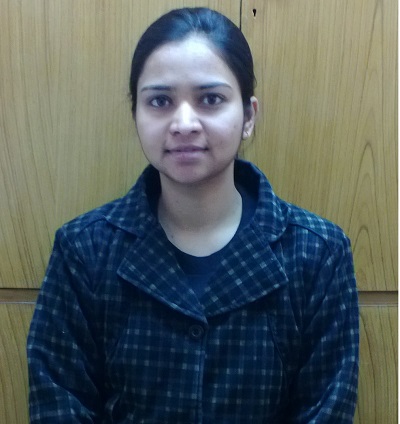
Bio:
Sonal Dixit (Graduate Student Member, IEEE) obtained Ph.D. from Indian Institute of Technology Kanpur under the supervision of Prof. Nishchal K. Verma and Prof. A.K. Ghosh. She completed her M.Tech. from Banasthali University. Her research areas are related to Deep Learning, Condition Based Monitoring, computational Intelligence, and its application.
Abstract of the talk:
Maintenance of major industrial assets like an air compressor, engine, bearing, gearbox, etc. is one of the most crucial aspects of industrial plants and it directly affects the production, safety, downtime, and net revenue. Condition-based Maintenance (CBM) is the most widely adopted maintenance approach due to its reliability and proactive performance. Fault diagnosis and Remaining Useful Life (RUL) prediction are the major components of the CBM. The fault diagnosis system notifies the occurrence of a fault, its type, and location and RUL assesses the criticality of failure and predicts the remaining time of the machine before it requires maintenance. Data-driven-based approaches have been widely adopted for fault diagnosis purposes. In these methods firstly machine data is collected, featured, and analyzed using machine learning algorithms. The performance of conventional data-driven fault diagnosis frameworks relies upon the quality of extracted features and quantity of training data. To obtain good quality features from data prior knowledge and domain expertise is needed. Moreover, it is challenging to perform feature processing for large data. To resolve these issues deep learning-based fault diagnosis frameworks will be discussed along with the future directions.
Lecture on "Artificial Intelligence Algorithms for Image Enhancement"
|
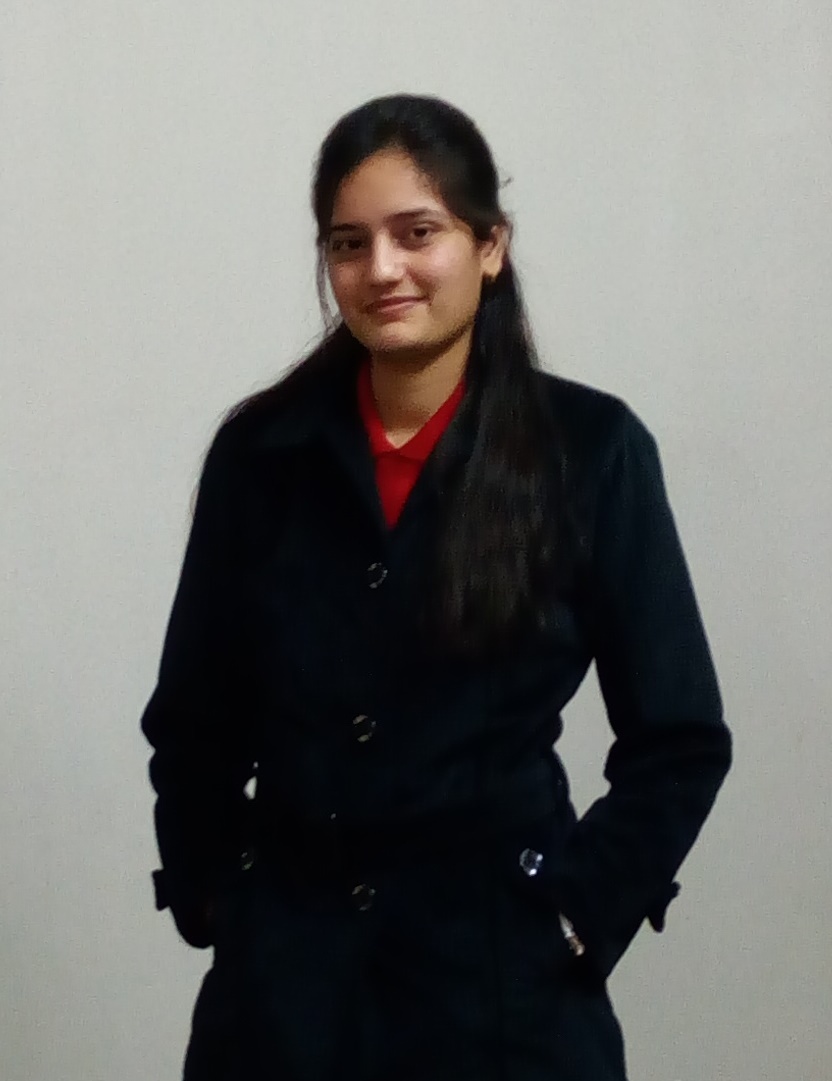
Bio:
Dr. Teena Sharma is an IEEE member and has been serving as an Executive Committee Member of CIS Chapter, IEEE UP Section (CIS11) Since 2018. Dr. Sharma received her Ph.D. degree from the Department of Electrical Engineering, Indian Institute of Technology Kanpur, India. Her research interests include artificial intelligence, deep learning, machine learning, computer vision, and its applications. She has published 20+ research papers in several international and national journals and conferences of repute including IEEE Transactions on Artificial Intelligence, IEEE Transactions on Emerging Topics in Computational Intelligence, and many more.
Abstract of the talk:
Artificial Intelligence offers various popular and efficient digital image processing tools to increase the robustness of vision-based applications. These applications depend upon the quality of the input image with fine textural details. The quality of an image can be described by the visible information such as illumination, color, gradients, etc. which gets affected due to various atmospheric conditions i.e., haze and non-uniform illumination. If haze particles are present, the transmission of the reflected light rays to the observer gets obstructed and Airlight increases. Thus, the resulting image appears hazy. On the other hand, the non-uniform illumination condition produces dark appearance of the captured scene resulting in loss of visible features. Therefore, image enhancement is an essential and important pre-processing step to restore the textural information with fine image details which aims to increase the robustness of vision-based applications. This talk will discuss the artificial intelligent algorithms able to deal with outdoor weather conditions and illumination variations.
Lecture on "Time Series Analysis"
|
Lecture on "Applications of Genetic Algorithms in Optimization Problems in Sensor Networks"
|
Lecture on "Introduction to Machine Learning"
|
Lecture on "Deep Learning and Artificial Intelligence"
|
Lecture on "System Design"
|
Lecture on "Ambient intelligence: convergence of artificial intelligence,
machine learning, biometrics, cloud-computing, and internet-of-things"
|
Abstract:
Adaptability and advanced services for ambient intelligence require an
intelligent technological support for understanding the current needs and
the desires of users in the interactions with the environment for their
daily use, as well as for understanding the current status of the
environment also in complex situations. This infrastructure constitutes an
essential base for smart living. Various technologies are nowadays
converging to support the creation of efficient and effective
infrastructures for ambient intelligence.
Artificial intelligence can provide flexible techniques for designing and
implementing monitoring and control systems, which can be configured from
behavioral examples or by mimicking approximate reasoning processes to
achieve adaptable systems. Machine learning can be effective in extracting
knowledge from data and learn the actual and desired behaviors and needs
of individuals as well as the environment to support informed decisions in
managing the environment itself and its adaptation to the people’s needs.
Biometrics can help in identifying individuals or groups: their profiles
can be used for adjusting the behavior of the environment. Machine
learning can be exploited for dynamically learning the preferences and
needs of individuals and enrich/update the profile associated either to
such individual or to the group. Biometrics can also be used to create
advanced human-computer interaction frameworks.
Cloud computing environments will be instrumental in allowing for
worldwide availability of knowledge about the preferences and needs of
individuals as well as services for ambient intelligence to build
applications easily.
This talk will analyze the opportunities offered by these technologies to
support the realization of adaptable operations and intelligent services
for smart living in an ambient intelligent infrastructure.
Bio:
Prof. Vincenzo Piuri has received his Ph.D. in computer engineering at
Politecnico di Milano, Italy (1989). He is Full Professor in computer
engineering at the Università degli Studi di Milano, Italy (since 2000).
He has been Associate Professor at Politecnico di Milano, Italy and
Visiting Professor at the University of Texas at Austin and at George
Mason University, USA.
His main research interests are artificial intelligence, computational
intelligence, intelligent systems, machine learning, pattern analysis and
recognition, signal and image processing, biometrics, intelligent
measurement systems, industrial applications, digital processing
architectures, fault tolerance, dependability, and cloud computing
infrastructures. Original results have been published in more than 400
papers in international journals, proceedings of international
conferences, books, and book chapters.
He is Fellow of the IEEE, Distinguished Scientist of ACM, and Senior
Member of INNS. He has been IEEE Vice President for Technical Activities
(2015), IEEE Director, President of the IEEE Computational Intelligence
Society, Vice President for Education of the IEEE Biometrics Council, Vice
President for Publications of the IEEE Instrumentation and Measurement
Society and the IEEE Systems Council, and Vice President for Membership of
the IEEE Computational Intelligence Society.
He is Editor-in-Chief of the IEEE Systems Journal (2013-19), and Associate
Editor of the IEEE Transactions on Computers and the IEEE Transactions on
Cloud Computing, and has been Associate Editor of the IEEE Transactions on
Neural Networks and the IEEE Transactions on Instrumentation and
Measurement.
He received the IEEE Instrumentation and Measurement Society Technical
Award (2002). He is Honorary Professor at Obuda University, Hungary;
Guangdong University of Petrochemical Technology, China; Northeastern
University, China; Muroran Institute of Technology, Japan; and the Amity
University, India.
Distinguished Lecture Program Talk on "Evolutionary Multi-Criterion Optimization:
Introduction to Theories and Applications"
|
Abstract:
The aim of this talk is comprehensive coverage of Evolutionary algorithms one of the growing area of research in field of Computational Intelligence. Many real world problems have multiple objectives, where instead of exact solution a set of optimal solutions is required. Evolutionary algorithm is a highly effective way of finding multiple effective solutions in a single simulation run.
Bio:
Prof. Deb is Koenig Endowed Chair Professor at Department of Electrical and
Computer Engineering in Michigan State University (MSU), USA. He also holds
joint appointments at Department of Mechanical Engineering and at Department of
Computer Science and Engineering at MSU. Prior to his joining MSU, he was at
Indian Institute of Technology (IIT) Kanpur. Prof. Deb's research interests are
in Evolutionary Optimization and their application in optimization, Meta-
modeling, Constraint Handling, Engineering Design, Neural Networks, Data-
mining and Machine learning.
He is awarded Infosys Prize, TWAS Prize in Engineering Sciences, CajAstur
Mamdani Prize, Distinguished Alumni Award from IIT Kharagpur, Edgeworth-
Pareto award, Bhatnagar Prize in Engineering Sciences, and Bessel Research
award from Germany. He is fellow of IEEE, ASME, and three science academies
in India. He has published over 375 research papers with Google Scholar citation
of 63,500 with h-index 84. He is in the editorial board on 20 major international
journals.
 Lecture Series on "Computational Intelligence"
Lecture Series on "Computational Intelligence"
